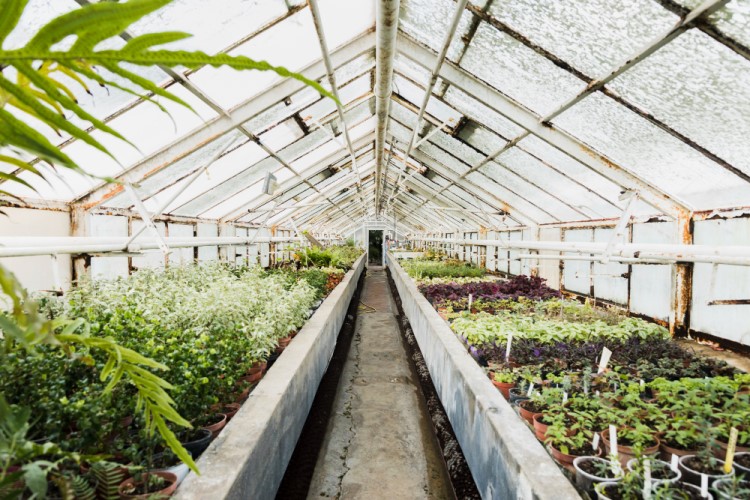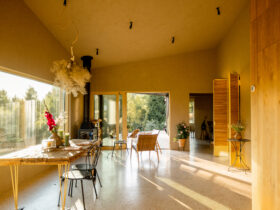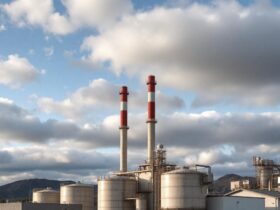Modern architecture is characterised by the innovative use of materials, embracing not just function but also aesthetic appeal and environmental sustainability. One such material making a significant mark in today’s designs is polycarbonate.
A Brief Introduction to Polycarbonate
Lightweight yet durable, this thermoplastic is increasingly becoming a go-to choice for architects. From façades to skylights and interior partitions to greenhouses, polycarbonate is proving itself as a versatile and practical material in the world of architecture.
Polycarbonate is a type of plastic that is known for its exceptional strength, durability, and transparency. It is virtually unbreakable and is 250 times stronger than glass but only half its weight. These qualities make it an attractive alternative to materials like glass and acrylic. Its ability to withstand extreme temperatures and high impact without shattering breaking is a key feature that has garnered the attention of architects and builders alike.
Enhancing Light and Space
One of the primary benefits of polycarbonate is its ability to transmit light. It offers various levels of transparency and can be manufactured with different textures and finishes, which makes it possible to manipulate and diffuse light in inventive ways.
For architects, this means an opportunity to design spaces that are bright and inviting without the glare and intensity that large glass surfaces can sometimes produce. Additionally, polycarbonate cut to size can fit seamlessly into a variety of spaces, making it a flexible solution for enhancing both light and space.
Energy Efficiency and Environmental Benefits
In a world growing ever more conscious of environmental sustainability, polycarbonate is standing out for its energy-efficient properties. This material has excellent insulation capabilities, often outperforming glass by a significant margin.
When exploring modern architectural materials, it’s also important to consider energy efficiency and insulation. For those looking to improve their home’s energy performance, finding an insulation company near me can provide the necessary expertise and services. Proper insulation not only enhances comfort but also contributes to the sustainability and efficiency of contemporary building designs.
Its multi-wall structure can trap air between layers, serving as an effective insulating barrier that reduces heat loss in winter and keeps interiors cooler in summer. This, in turn, reduces the reliance on artificial heating and cooling systems, helping to lower energy costs and the building’s overall carbon footprint.
Flexibility in Design
The pliability and lightweight nature of polycarbonate make it an architect’s dream when it comes to design flexibility. It can be easily moulded into various shapes without losing its strength, allowing for imaginative and bold architectural designs that would be challenging to achieve with traditional materials like glass or concrete.
Its versatility is also evident in the range of colours it is available in, from clear to opaque, allowing architects to make aesthetic statements with the material itself.
Durability and Safety
Aside from its design advantages, polycarbonate is known for its remarkable durability and safety. Being virtually unbreakable, it is a perfect choice for buildings that require high levels of security, such as schools, hospitals, and public buildings. Its high resistance to impact makes it a preferred material in areas prone to vandalism or extreme weather conditions, providing a safe and long-lasting solution.
The Challenges of Using Polycarbonate
Despite its numerous advantages, using polycarbonate is not without its challenges. For instance, while it is more scratch-resistant than many other plastics, it can still be more prone to scratching than glass. Additionally, while it is a more cost-effective solution in many aspects due to its longevity and energy-saving properties, the initial investment can be higher than other materials.
The Future of Polycarbonate in Architecture
As architects continue to push the boundaries of design and sustainability, polycarbonate is poised to play an increasingly prominent role in the construction industry. Its combination of lightness, strength, flexibility, and energy efficiency make it a compelling choice for forward-thinking architects who are committed to designing buildings that are not only visually stunning but also environmentally responsible.
Conclusion
In an era of architectural design that demands both aesthetic beauty and practical functionality, polycarbonate is proving to be a significant player. From its capacity to fill spaces with inviting, natural light to its integral role in enhancing the energy efficiency of buildings, polycarbonate cut to size is becoming an indispensable material in modern architecture.
As we continue to explore and innovate with this versatile material, we can anticipate seeing even more creative and sustainable applications in the architectural landscapes of the future.













Leave a Reply